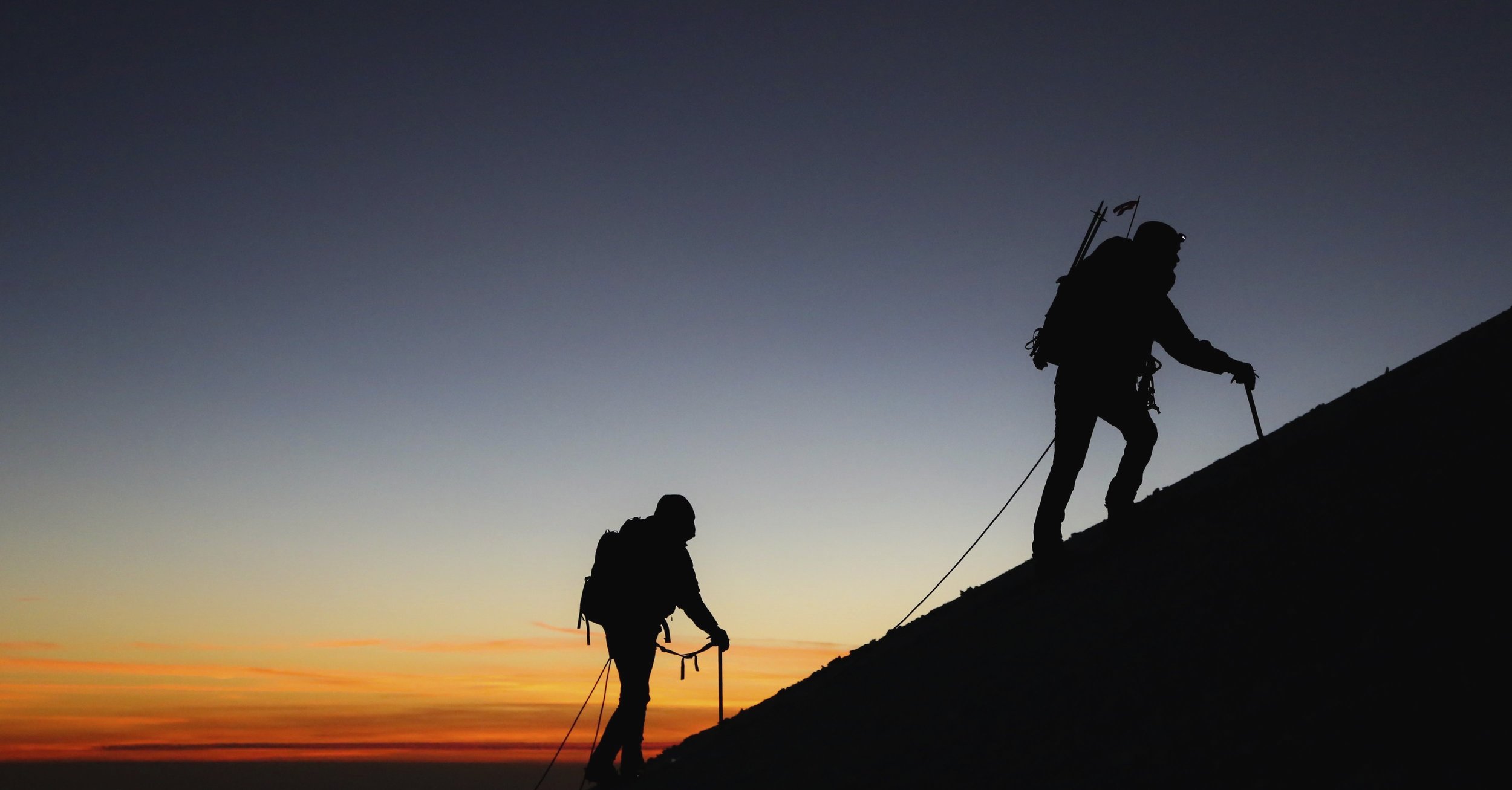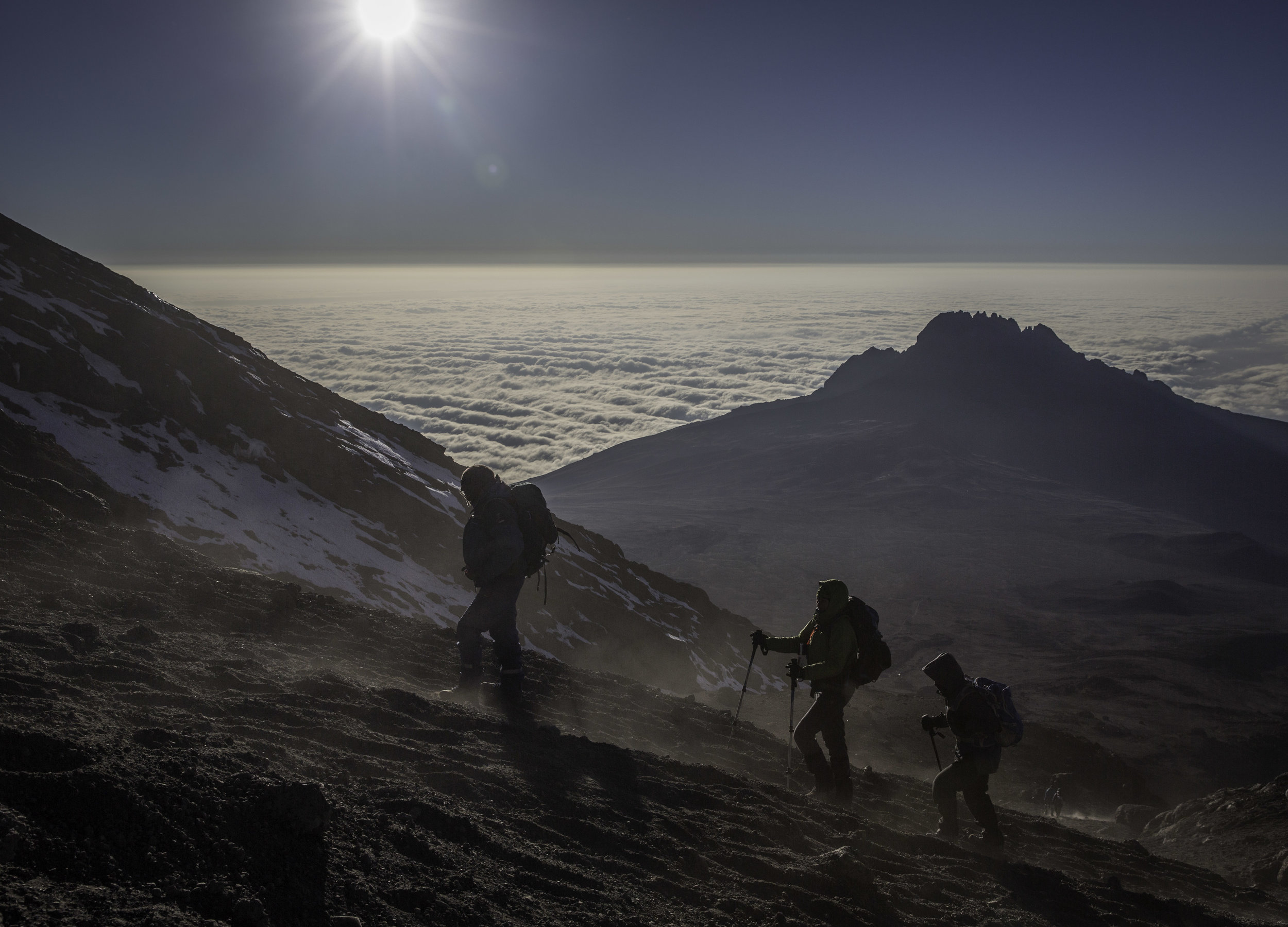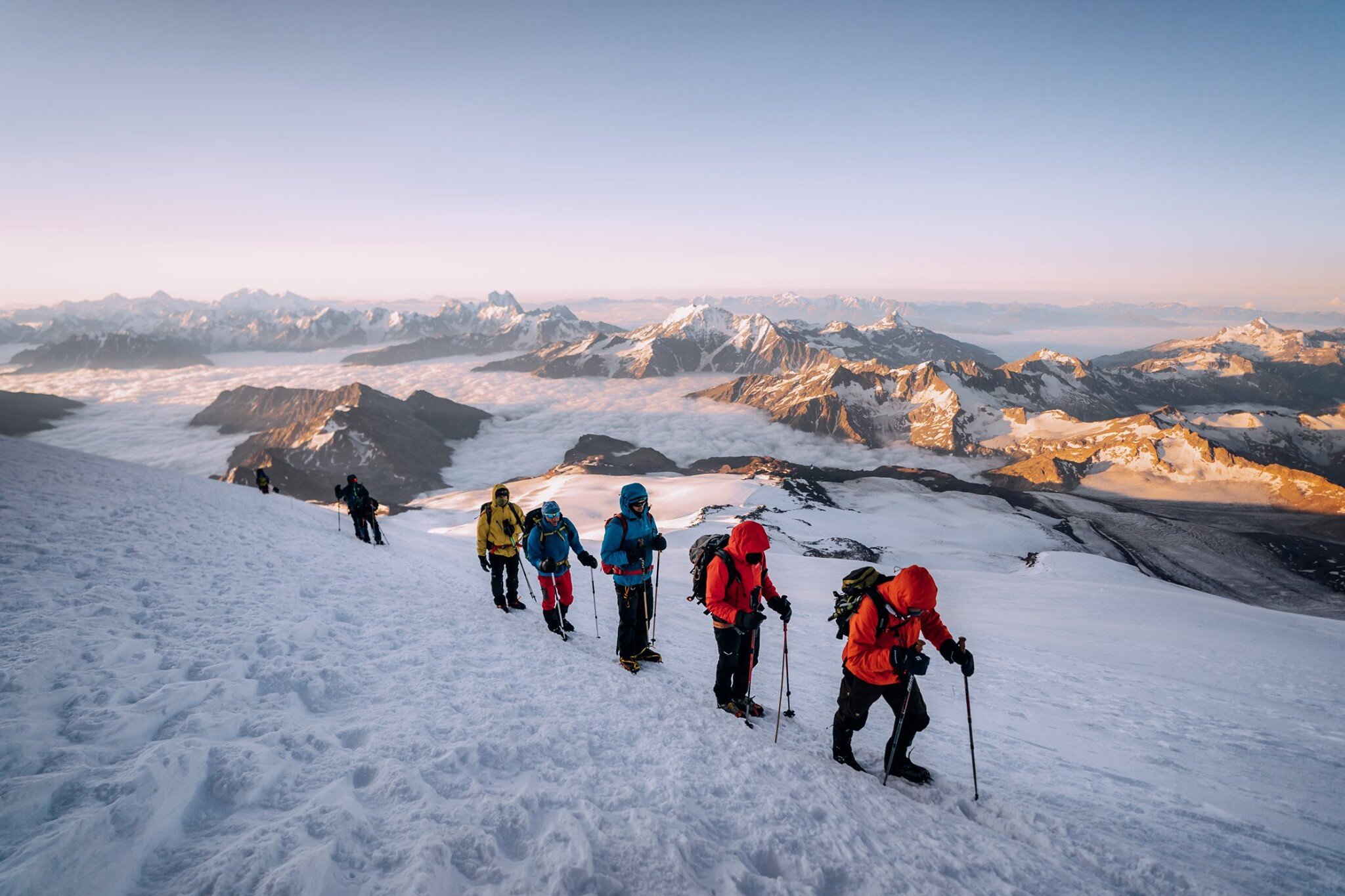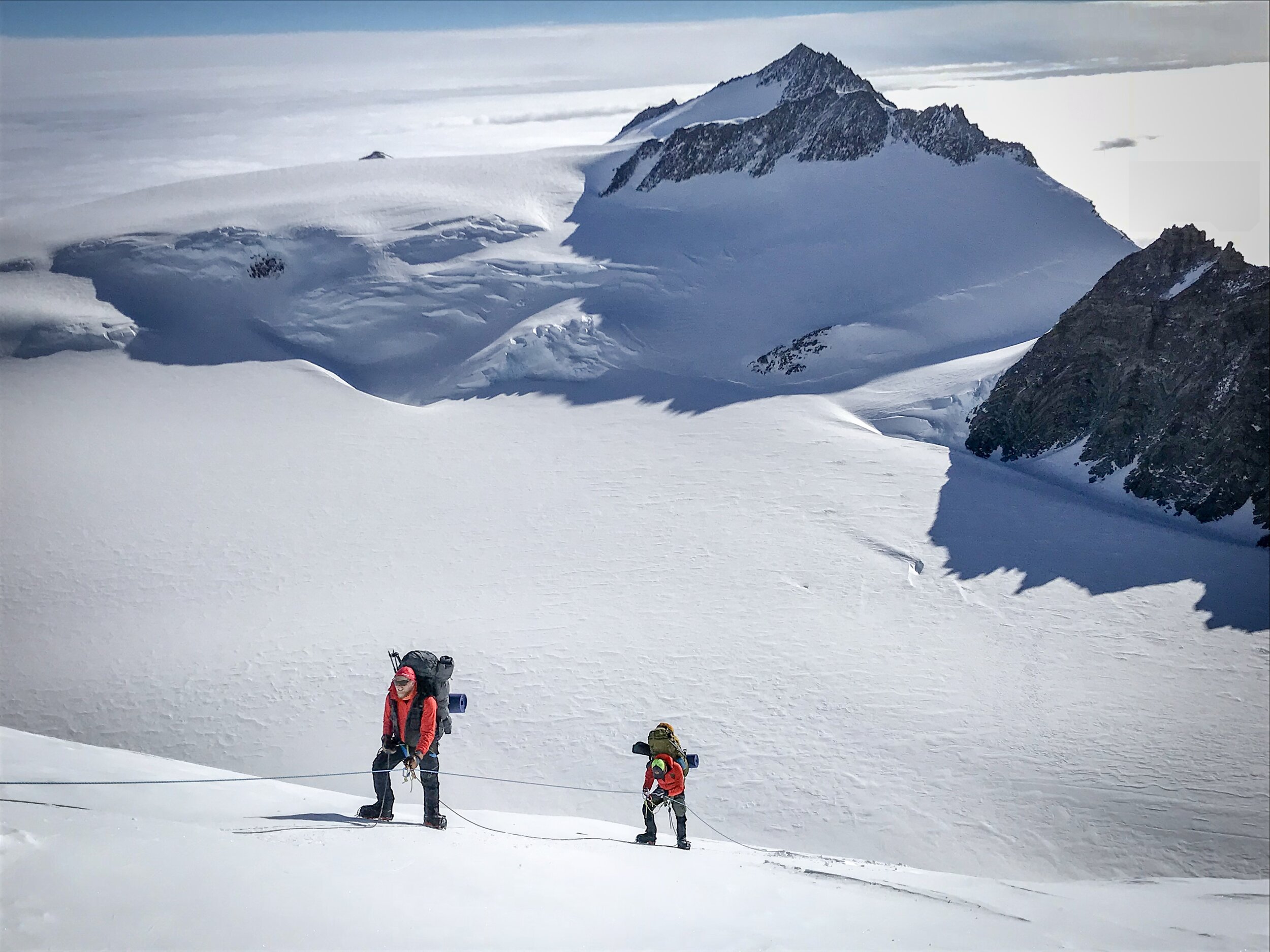
Why Trust Mountain Professionals?
This site is maintained by Professional Mountain Guides at Mountain Professionals, the world’s premier guide service for climbing the Seven Summits and Skiing to the Poles. Taking into account twenty years of guiding clients on Seven Summits mountains, and drawing on the expert staff of Mountain Professionals, the advice on the site can be trusted as a definitive recommendation resource from first steps of researching the various mountains, to buying clothing and equipment, to a proper progression for taking on the various mountains.
“Go where you feel most alive.”

Getting Started
There are many ways to begin climbing mountains and many more opinions as to the best ways to get started with the Seven Summits. On this site we discuss a suggested plan for the most efficient progression. It is possible to climb the Seven Summits only by gaining necessary skills on the actual peaks that are on the Seven Summits list with guided instruction. However, we also take into account trainings and pre-climbs that would prepare a climber for the best chances at a safe and successful overall project. The more you prepare, by taking introductory climbing and glacier skills courses, can only add to your experience level and better prepare you for the technical skills.
Learn to climb
Be ready for the rigors of the mountain with our climbing training course at Mt. Rainier.
Get the gear
A comprehensive list of the basic gear you’ll need for any of the 7 summits.
the seven summits

Seven Summits Progression
At Mountain Professionals we’ve been leading expeditions to the seven summits for fifteen years.
We work with climbers of all abilities, from beginners to experienced mountaineers looking to jump straight into the more demanding of the peaks. The best way to prepare yourself is to begin with the less technical mountains, building skills and knowledge of how your body works at altitude. With each successful ascent, you will gain valuable experience for the next mountain.
Below is the best suggested progression of climbing the Seven Summits. Variations are also an option depending on one’s own desires, schedule, and experience level.
1) Kilimanjaro
Africa
5895m / 19,341 ft
Kilimanjaro’s non technical route makes it a great training peak and introduction to expedition life. Guided expeditions allow a very fit trekker to focus on just making the day to day treks. Testing the body for adapting to altitude without technical skills and preparing for harder climbs on Elbrus and Aconcagua. It is quite often people’s first peak. We would recommend being it really good hiking shape, training for the trek, having experienced camping and the outdoors and bringing a desire to test your self on a challenging but doable summit.
The best time to climb: August and January, however it is possible to climb Kilimanjaro year round, there are months with more precipitation.
2) Elbrus
Europe
5642m / 18,510 ft
Elbrus is the highest mountain in Europe and it’s very moderately technical route makes it a great training peak for practicing basic crampon, ice axe, and rope team travel skills. Based out of comfortable huts on the mountain and the low angle slopes that do require climbers use ropes and crampons, prepares people for harder climbs on Aconcagua and Denali. It is quite often people’s second or third peak. We would recommend having climbed Kilimanjaro. Having taken a glacier skills course is a big plus but skills needed to climb Elbrus can also be taught on the trip itself to fit climbers.
The best time to climb: June through August during the summer months in the Caucasus Mountains.
3) Aconcagua
South America
6962m / 22,828 ft
Aconcagua is the highest mountain in the western hemisphere and it’s non technical route makes it a great training peak for climbing just under 7,000 meters. Testing the body for adapting to altitude without technical skills and preparing for harder climbs on Vinson and Denali. It is quite often people’s second or third peak. We would recommend having climbed Kilimanjaro and Elbrus.
The best time to climb: December through February during the summer months in the southern hemisphere.
4) Carstensz Pyramid
Oceania / Australia
4884m / 16,024 ft
Carstensz Pyramid is a technical route meaning that climbers should know basic skills including rappelling, fixed rope ascension, basic knots and be comfortable moving on moderate rock terrain. Most climbs are accomplished with helicopter to and from base camp, making it a relatively short climbing portion. The summit day is one long climb and you return to base camp. We would recommend having climbed Kilimanjaro, Elbrus, and have taken a basic rock course for skills.
The best time to climb: October and March though the mountain can be climbed year round, there are some months that have much more precipitation.
5) Denali
North America
6914m / 20,322 ft
Denali is probably the most strenuous of the Seven Summits. It requires that climbers know advanced glacier skills, rope team travel, and involves heavier load carries. The weather is more unstable than Everest and Vinson, making it a great challenge and incredible training for an Everest climb. We would recommend having climbed Kilimanjaro Elbrus, Aconcagua, even Everest in many cases and have taken a Glacier Skills course.
The best time to climb: May through July during the spring to early summer months in the Alaskan Range.
6) Vinson Massif
Antarctica
4892m / 16,050 ft
Mt. Vinson is the most remote of the Seven Summits. Having done previous peaks using glacier skills will set up people with the required technical skills such as rope team travel, crampons, ice axe, and cold weather living. The environmental realities of climbing in Antarctica demand that climbers have solid experience and good self care. It is quite often people’s second to last or last summit. We would recommend having climbed Kilimanjaro, Elbrus, Aconcagua, Carstensz Pyramid and Denali.
The only time to climb: December through January during the summer months in Antarctica.
7
) Everest
Asia
8848m / 29,029 ft
Everest is often the final step in the progression of the Seven Summits. It is also quite common for people to leave Mt. Vinson until after climbing Everest, but we would recommend at a having climbed Kilimanjaro, Elbrus, Aconcagua, Carstensz Pyramid, Denali, and Vinson before taking on the highest of the Seven Summits.
Best time to climb: April and May during the Pre-monsoon months in the Himalayas.









